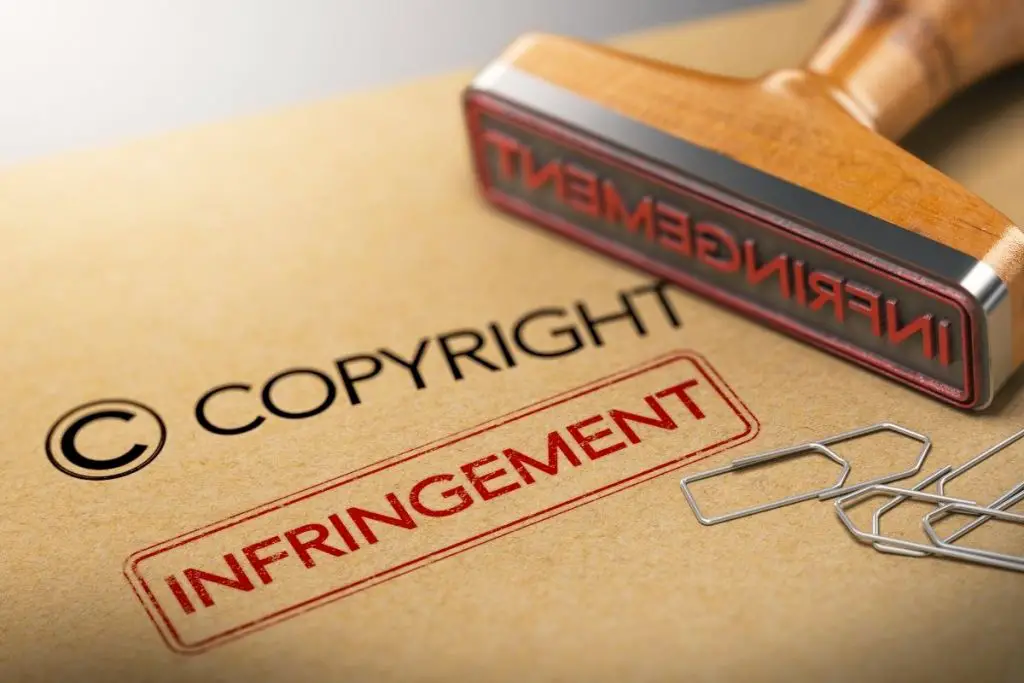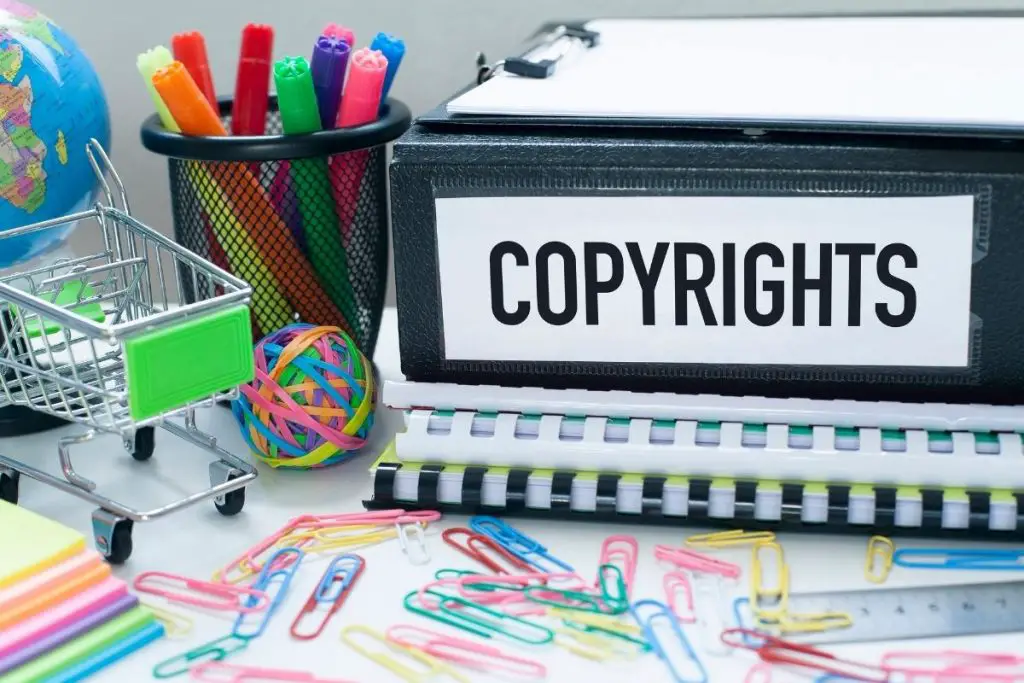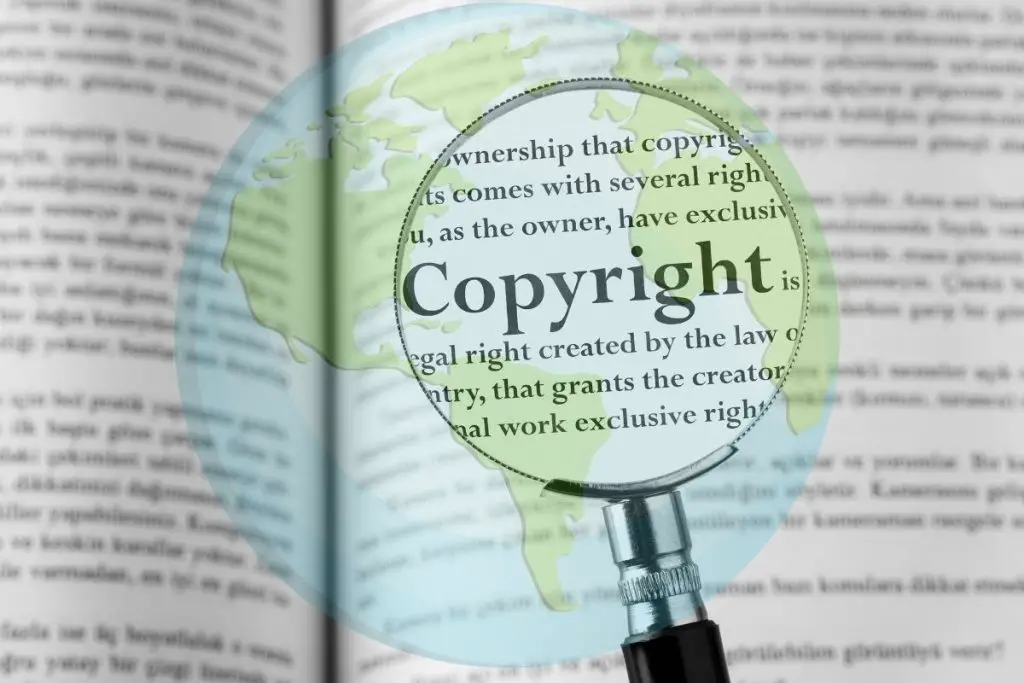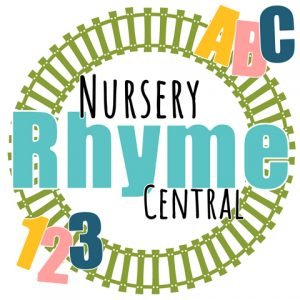Copyright is the legal right not to have a creative work used or reproduced without the copyright holder’s knowledge and permission. The holder may be the person who originated the work, or it may be someone who has bought the rights to it. Copyright forms part of a wider body of intellectual property law that includes patents, designs, and trademarks.
Copyright for many of the earliest nursery rhymes has expired. Nursery rhymes written in the 18th century and earlier are more likely to be in the public domain than those from the 19th century and later. It is always best to check each one individually before using as using new rhymes and recent adaptations may infringe on copyright laws.

A nursery rhyme is a song or set of verses that tell a story and is usually sung or read to young children. It uses rhythmic phrases and rhyming words to make them easy to remember for children who can’t read. Some date back to previous centuries, while others are quite new and are more likely to attract copyright infringements.
What parts of a Nursery Rhyme are Copyright?
It should be noted that even if the earliest version of a nursery rhyme is no longer protected by copyright, there could be later adaptations or arrangements that are. Thus, it is advisable to use the traditional version of the rhyme without incorporating any musical or interpretational elements that occur in later versions. This will reduce the risk of a copyright infringement claim to some extent, but not necessarily entirely.
Nursery rhymes written in the 20th century are likely to still have copyright attached to them, so unless the author has put them in the public domain, they shouldn’t be reproduced. An example of this would be nursery rhyme style songs sung by the children’s group ‘The Wiggles’ such as Hot Potatoe or Everybody Clap. It may be possible to obtain a license from the copyright holder – especially for educational purposes. There are some exceptions in many copyright laws related to the use of the work for teaching purposes. Generally speaking, they allow a copyrighted nursery rhyme to be used by way of illustration in a lesson or lecture.
How Can I Find Out If A Nursery Rhyme Has Copyright?

The Performing Rights Society Ltd (PRS), a British music copyright collective, has a database that can be checked to see if a nursery rhyme is in the public domain. The copyright period of a song in the UK is the life of the composer plus seventy years. In the US, songs were protected for ninety-five years until 1978, when the term was changed to the copyright holder’s life plus seventy years.
ASCAP is an example of an American non-profit rights organization that protects its members’ musical copyrights by monitoring public performances. Many other countries have performing rights organizations (PROs) to help their members with copyright protection. When you are contemplating using a nursery rhyme, especially in public performance such as a broadcast, podcast, or video, it is best to check with the PRO in your country or the country where the public performance will occur.
The Public Domain Info Project (PD Info) contains a list of best-known public domain children’s songs, including nursery rhymes such as Hey Diddle Diddle, Hickory Dickory Dock, Humpty Dumpty, Jack Be Nimble, etc. But even their website stresses that these lists must not be taken as sufficient proof that the song is in the public domain.
What Does Copyright Consist Of?
The World Intellectual Property Organization (WIPO) recognizes two different aspects to copyright: economic rights and moral rights.
Economic rights are those associated with making money from the creative work and include the exclusive right to use and distribute it. These rights can be transferred either by a license or through the assignment of the copyright. In the former, the author still retains the copyright but allows the license holder to distribute or reproduce the work. In the latter, the author does not keep the copyright but transfers it entirely to the new owner.
Moral rights are associated with the author’s right to be associated or credited with the work and prevent others from adapting it in unauthorized ways. A moral right allows the author to maintain the integrity of their work and to prevent people from treating it in a derogatory way. Moral rights are not usually transferable and expire on the author’s death. Still, the economic part of the right is transferable and may last for many years after the author has died.
Copyright laws usually require the permission of the owner for the following activities:
- Translation into another language
- Adaptations and arrangements of the work
- Public performance
- Public recital
- Communication of the performance of the work to the public
- Broadcasting
- Reproduction of the work
How do Copyright Laws Differ Between Countries?
Copyright laws vary between countries, so a person may hold copyright to a nursery rhyme in one country but not another. It all depends on the copyright laws of the country in which you use the material. However, international conventions apply in countries that have signed them that may affect the copyright in the country of origin relative to the copyright abroad.
There are several international copyright conventions and treaties that many countries have signed, which means that they will recognize and protect the copyrights of other nations’ citizens. These conventions and treaties have also led to some standardization in various countries’ copyright laws, but one country’s law is not usually binding in another.

The international World Trade Organisation (WTO) administers TRIPS, the Agreement on Trade-Related Aspects of Intellectual Property Rights. It sets out the obligations of country signatories regarding the protection of intellectual property rights held by people of other nations.
Prior to 1989, American law required a copyright holder to indicate that they held the copyright by using the © symbol, the year the work was first published, and the holder’s name. The passing of the Berne Convention Implementation Act in 1989 amended the US copyright legislation to conform to many of the provisions of this international convention, making the use of copyright notices optional.
These days a work does not have to have a copyright notice to be protected by copyright. A copyright violation does not usually constitute a criminal offense, but some jurisdictions make it so, especially in the area of counterfeiting. Usually, a copyright infringement will be dealt with as a civil case where the holder sues the unauthorized user or distributor.
American copyright law incorporates the Fair Use doctrine that permits unlicensed use of copyrighted material in specific circumstances. It identifies fair use cases such as research, scholarship, teaching, news reporting, comment, and criticism. Courts will usually find that non-profit educational use is fair, but not in every instance. Each case is decided based on its particular facts and circumstances.
What you need to remember!
Nursery rhymes do have copyright, although it may have expired in the case of many of the older rhymes. You should always check before performing or reproducing a nursery rhyme in public, especially for commercial purposes. Small-scale educational use is less likely to attract significant penalties than large-scale commercial use. Nothing in this post constitutes legal advice and should not be relied upon as such.

